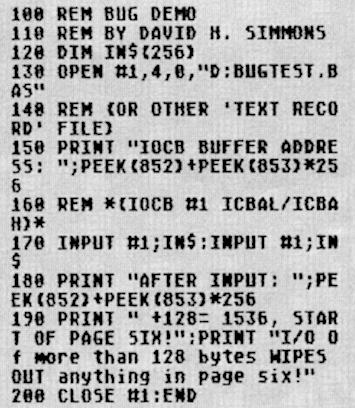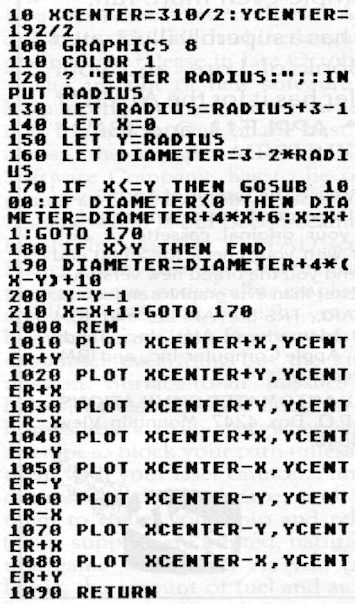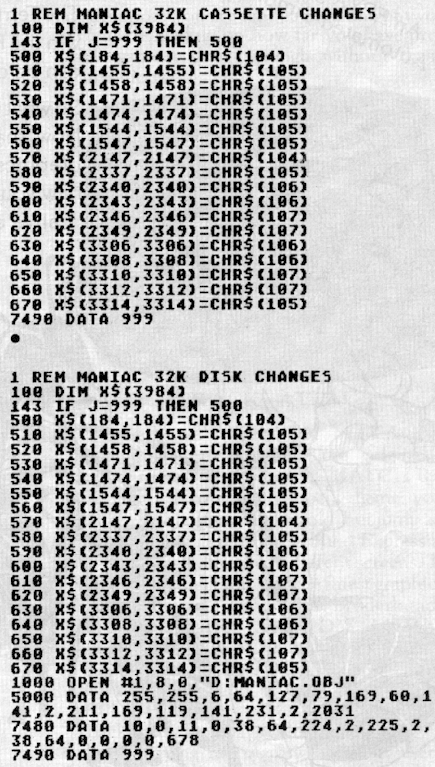READER COMMENT
BUG ALERT
Dear Editor:
Enclosed are details on a bug in the ATARI DOS (or possibly BASIC'S 1/0 code),' which can clobber up to half of page 6, the "safe" RAM.
Since the operation of the bug isn't obvious, it can cause an incredible amount of frustration - I spent two days trying to find a non-existent bug in a USR sub, before I realized that DOS was the culprit.
Note that I am sending a copy of the information to several other magazines, so that it can be distributed as widely as possible.
Sincerely, David H. Simmons Redondo Beach, CA
BUG ALERT!!
RAM page six (1536-1791, $600-6FF) is NOT always "safe" memory.
A bug in either DOS (DOS 1, DOS 2.0s, and OS/A tested), the BASIC cartridge, or the 10K OS ROM (Version A tested) causes the location of the disk's 1/0 buffer to, move from around location 7000-8000 (decimal) to location 1408, which is only 128 bytes below location 1536, the beginning of page six.
This means that an input or output of more than 128 bytes will destroy some or all of the first 127 bytes of page six! The program below demonstrates the change of address problem.
TESTING INTRUCTIONS:
A: Type in program.
B: SAVE to disk as "D:BUGTEST.BAS".
C: Type "RUN".

Dear Editors:
The questions concerning the interference band which sometimes appears to roll up the screen on ATARI 400, 800, and VCS machines have an easy answer. ATARI failed to follow good engineering practice in the design of the power supply circuits. But, the deficiency is correctable for less than a dollar.
The interference is caused by the omission by ATARI of a component required in any power supply regulated by an integrated circuit. Without the omitted component, the regulator circuit can oscillate at a very high frequency. Such oscillation causes the interference band on the screen. ATARI uses only electrolytic capacitors to filter the power from the regulator. Electrolytic capacitors are only effective in eliminating low frequency oscillations.
So the corrective action required is to put in a filter to eliminate
high frequency oscillations too. The component needed is a .01
micofarad ceramic capacitor available at a Radio Shack Store. One of them should be connected in parallel with each
electrolytic capacitor in the power supply section of the console.
The wires used should be cut as short as possible and
connected by soldering. After these additions, the interference
will be totally eliminated and the power supply will generate less
heat.
Sincerely,
James Howard
Austin, Texas
Dear A. N. A. L. O. G.,
Congratulations are certainly in order to Michael A. Ivins for
the magnificent program TRIPLE THREAT DICE, published in
issue # 7. We enjoyed it tremendously.
The odds should be changed within the program so that (when the player wins), the player will receive his own money back, as well as the stated odds for that bet. For example, the even money bets in the program only returns the player's bet, if the player wins.
This can be corrected by changing the following lines:

Also, in the following lines, add one more count to the number following the asterisk.

Sincerely,
Henry L. Smith
Newburgh, N.Y.
Gentlemen:
We write in response to the question
presented by Mr. Tucker, issue 7 or
your magazine, how to draw a
simple circle?
Presented below, while not exactly simple, is a routine which will draw a circle considerably faster than the one presented by the magazine.
This routine draws the circle 8 sides at a time by reflecting the calculated points of one seventh of the circle to the other seven sides.
Respectfully,
David M. Kampschafer Programmer/Analyst
Lloyd D. Ollmann Jr. Programmer-Consultant
Synergistic Software

MANIAC IN 32K
We have received many requests for information on how to run issue no. 6's "Maniac" game in 32K machines. Stephen A. Vance, of Brooklyn, Ohio, has found a way to do just that. He writes:
"When Issue Number 6 of A.N.A.L.O.G. Magazine arrived in the mail, I was thrilled to see a machine language game in it. Unfortunately, the article states that the program requires 48K and I only have 32K. I decided to take a closer look to see if it really needed 48K. I discovered that (the program) was using address $8800 (34816 decimal) to $9000 (36854 decimal) for player-missile graphics. Since I only have 32K, the system can't use those addresses. Therefore, I went through the program changing the player-missile graphics to $6800 (26624 decimal) to $7000 (28672 decimal). After doing this, I rewrote it to tape again and it worked perfectly. This program was worth the effort."
Use the appropriate changed below to make "Maniac" run in 32K.
Note: the disk version will create a file called "MANIAC.OBJ". This is a binary file. Use DOS menu option "L" to load this file (no cartridge). The "Maniac" game will automatically start.
